Download the PDF white paper: Mastering Lifecycle Strategy
“The company without strategy is willing to try anything.” – Michael Porter
“Strategy” is overused, losing its edge. Wikipedia calls it a plan for long-term goals under uncertainty; Michael Porter, of Five Forces fame, sees it as a unique, valuable position via differentiating actions. Both miss the core: the environment.
Through the Organizational Physics lens, every strategy’s goal is to pull new energy from the surrounding environment—now and over time. Why? Every system has finite energy. Without fresh input, it collapses. A person stranded without food, a business without sales—both fail for the same reason.
This drive for new energy explains why top strategies align unique, evolving capabilities with growing market opportunities. Check the world’s most valuable companies (e.g., Apple, Amazon, Microsoft in 2021)—they sit at the center of ecosystems, extracting energy in a virtuous cycle.
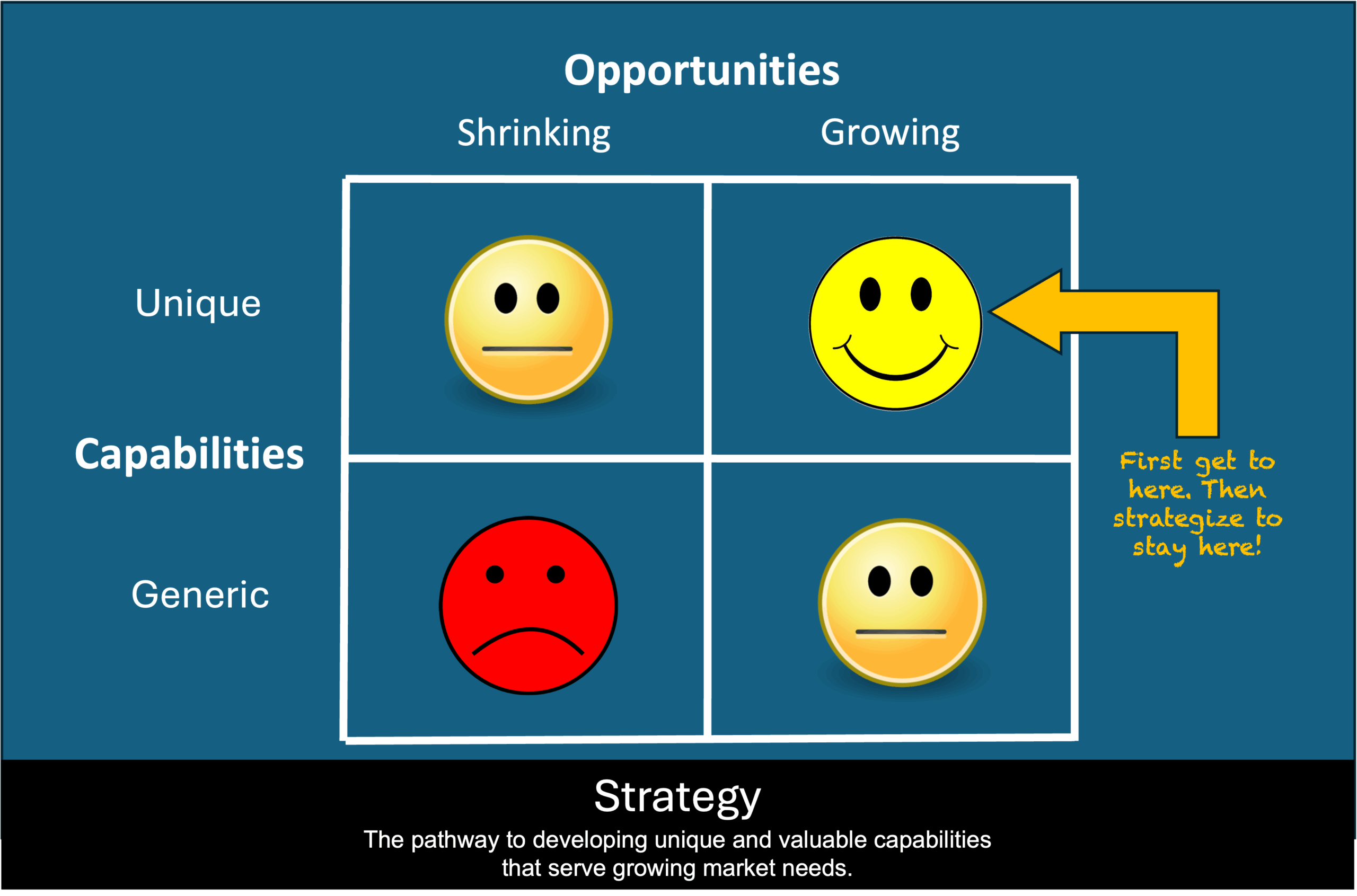
The upper left quadrant (unique capabilities, shrinking opportunities) traps past successes unable to adapt. The lower right (growing opportunities, generic capabilities) hosts me-too players thriving only in booms—like my hairdresser turned realtor. The lower left? A death zone of no demand and no edge.
Getting to the “happy place” isn’t enough—staying there against shifting conditions is the strategic challenge.
“Execution is something, but timing is everything.” – Todd Stocker
Aligning capabilities with market opportunities reveals lifecycle theory’s power. Every system—your life, your business, its markets—follows the arc: birth, growth, decay, death. Duration varies, but the pattern holds.
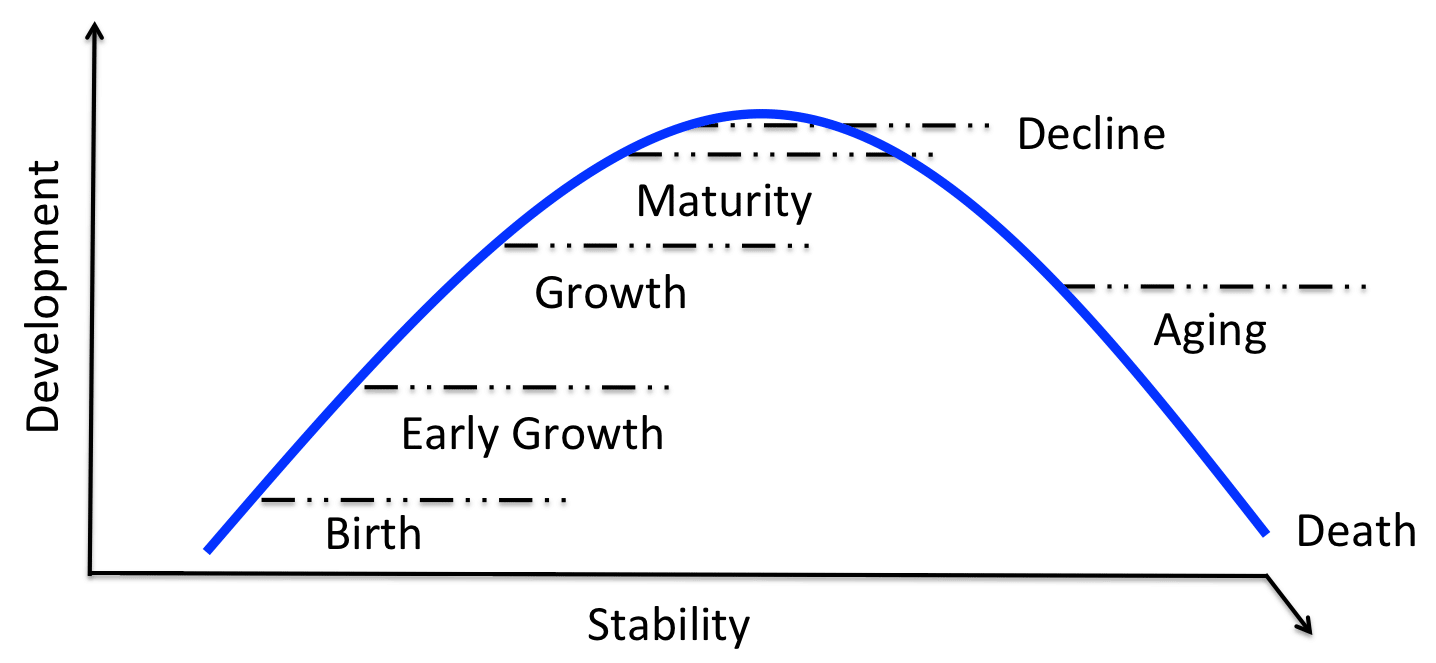
Consider two fathers: one studies child development, adapting to each stage; the other wings it, parenting a 13-year-old like a 3-year-old. The first thrives; the second flounders. In business, ignoring lifecycle stages—despite love, smarts, or creativity—leads to mess, not mastery.
Without lifecycle awareness, sound logic applied at the wrong time spells failure. With it, you and your team share a map to navigate the terrain.
“You can go as fast as possible through each stage, but you can’t skip a stage.” – Jeff Bezos
Strategy starts with “where”—a business’s lifecycle stage dictates its must-do strategy. That’s why I built the Organizational Physics Strategy Map: a guide to translate lifecycle theory into actionable imperatives.
Start your annual planning with this map—pinpointing current stages and execution risk speeds up strategy alignment. It cascades clear “why”s to every level, syncing departmental and individual OKRs.
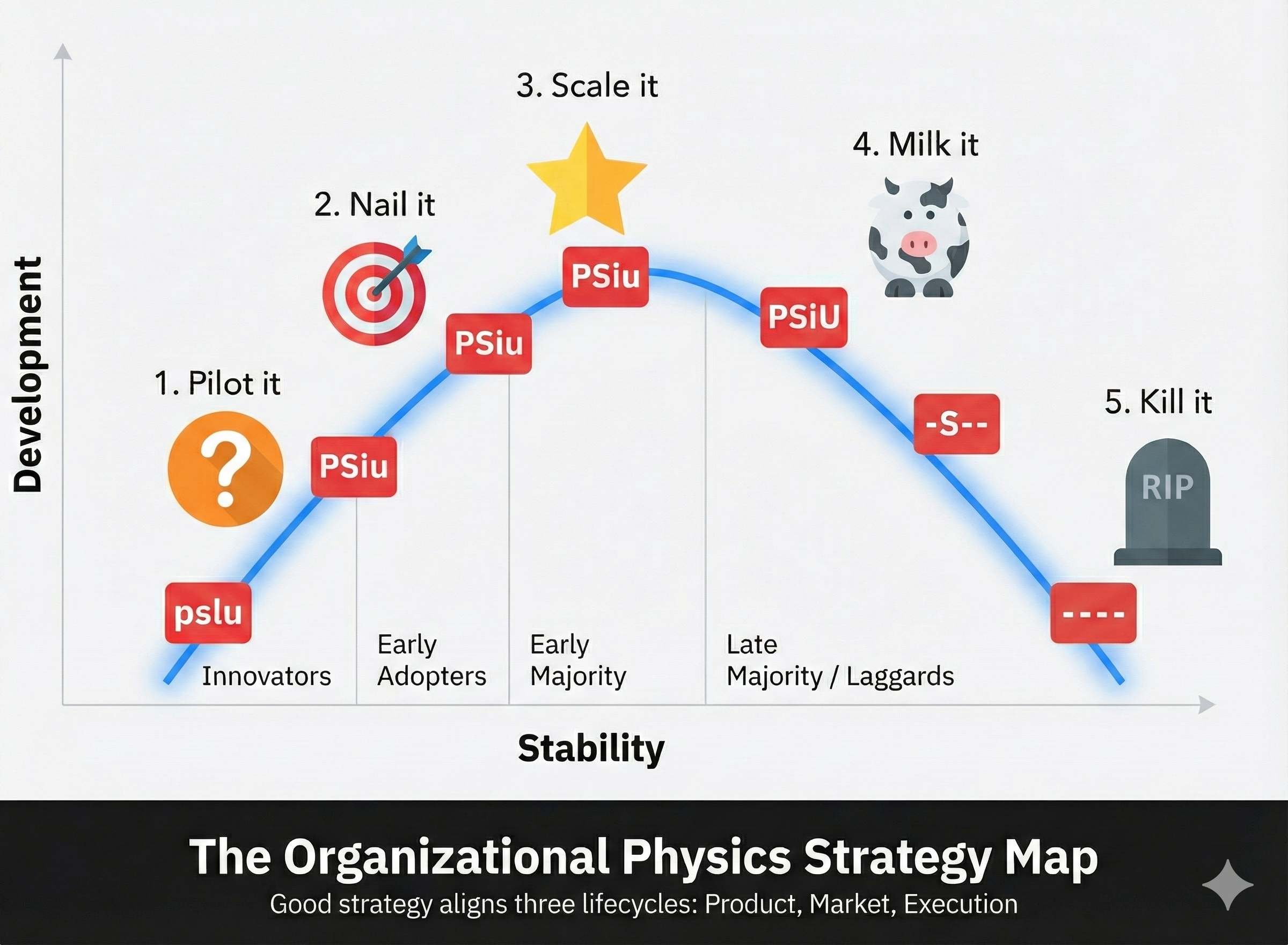
The map ties three lifecycles:
– **Product Lifecycle** (top): Assets from Pilot It to Kill It.
– **Customer Lifecycle** (bottom): Segments from Innovators to Late Majority/Laggards.
– **Execution Lifecycle** (parabola): Dominant PSIU forces (Producing, Stabilizing, Innovating, Unifying) per stage.
Alignment across these lifecycles boosts success; misalignment heightens execution risk.
Each product must navigate Pilot It → Nail It → Scale It → Milk It → Kill It, funding new ventures from cash cows. Customers evolve from Innovators (cutting-edge seekers) to Late Majority (proven, low-effort buyers).
The Execution Lifecycle’s PSIU forces shift: **psIu** (innovating) for Pilot It, **Psiu** (producing) for Nail It, **PSiu** (stabilizing) for Scale It, **PSIU** (balanced) at peak, **PSiU** (staid) downward, **-S–** (bureaucracy), **—-** (death). Misalignment—e.g., scaling without nailing—crashes the system like misparenting a child.
Unlike humans, businesses can defy decay through perpetual renewal—keeping the core in Scale It, launching new units.
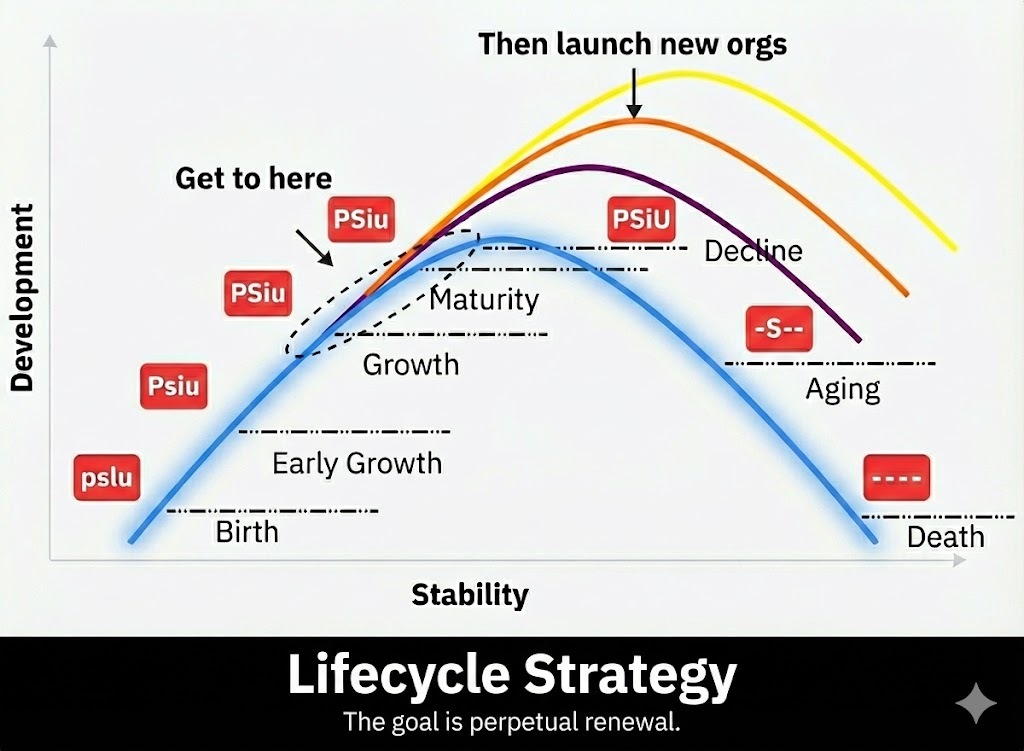
Three truths: Manage each unit by its stage, never skip stages, and align lifecycles to dodge failure. Jim Collins nailed it—‘First who, then what’—without the right team, new units falter.
Track market growth, competition, pricing pressure, and net cash flow to gauge alignment.
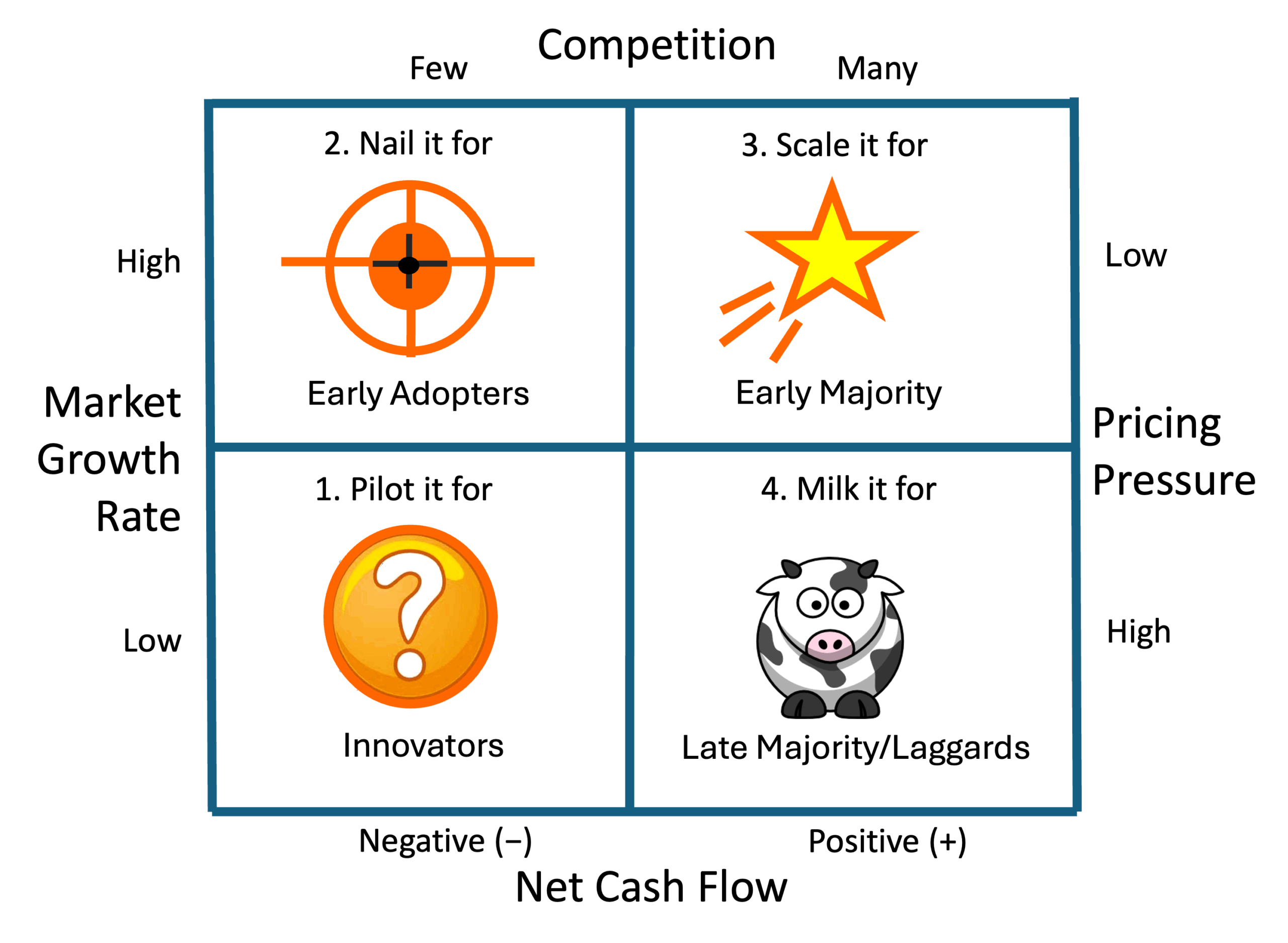
Pilot It shows low growth, few competitors, high pricing pressure, and negative cash flow. Nail It boosts growth and margins. Scale It leverages leadership to extend value. Milk It faces high competition and low growth, risking the commodity trap.
Alignment lowers risk; skipping stages amplifies it. The risks are:
Lifecycle Strategy stands apart—focused on “how” over “what,” tracking stages, not shortcuts.
Master each stage’s strategy for perpetual renewal. Misalignment courts failure—use the Strategy Map and Top-Level OKRs to align and adapt.
Let’s build your high-performance organization together.
Organizational Physics® empowers CEOs and leadership teams to scale with clarity and confidence. By applying universal principles and proven frameworks, we help organizations improve internal performance, accelerate growth, and build resilient structures for the long term.
© Copyright Organizational Physics Inc.